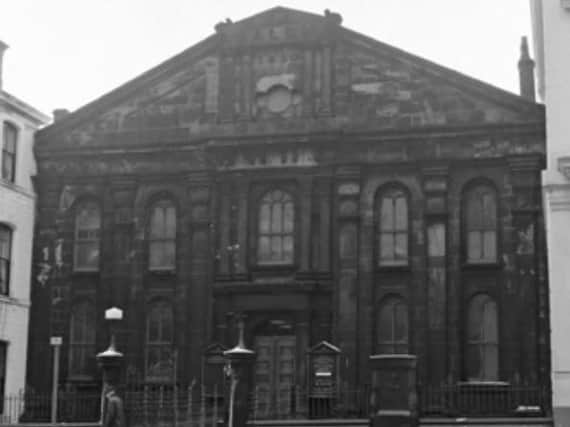From the Express archive: Salem Congregational Church


It was founded in 1850 and was opened on Good Friday, 1851, the second of three important Congregational churches in Burnley.
The Congregationalists do not figure prominently in the history of the town but the three churches were excellent buildings of their kind and constituted, Bethesda, on the street of that name, which was opened in 1814 and rebuilt in 1878, Salem, which was on Manchester Road, and Hollingreave, on the road of that name, which was opened in 1896.
Advertisement
Hide AdAdvertisement
Hide AdThe photograph was taken at the time when the decision had been made for Salem to apply to re-join the mother church, Bethesda. The condition of Salem was such that, to restore it, would have cost more than the church could afford.
The application was successful and the three churches came together at Bethesda, which survives to this day. The Rev. C. Holgate, who also had oversight of Bethesda and Hollingreave, said: “United Services have been held regularly during the past two years and future plans have been under constant discussion.”
The unification of the three churches brought an end to 120 years of separation so far as Salem was concerned. It was in 1849 that members at Bethesda disagreed about the appointment of a new minister. Those who could not agree left and formed their own place of worship.
Congregationalism has a history which stretches back to the Reformation, but the name invokes the earliest Christian churches when services and organisation were not as complicated as they later became.
Advertisement
Hide AdAdvertisement
Hide AdIn 1550 men and women began meeting together as Separatists from what became the Anglican Church. When Elizabeth I came to the throne it soon became clear that she did not intend a drastic reform. Those who did not agree with this joined groups like the Separatists (later Congregationalists) and the Puritans, both of which wanted Christianity to return to the imagined purity of the past.
The Congregationalists would not accept the interference of the State in religion. They also resented the claim of the crown to be the effective head of the English national church. It was also the case that members believed that, without interference, they should govern themselves in religious matters.
The State regarded this as treachery and Congregationalists were driven underground and were persecuted, a number of martyrs being created. In these years a number of
Congregationalists migrated to the Netherlands and they were represented on the Mayflower, in 1622, when some made their way to America, where Congregationalism was influential in shaping both religion and politics.
Advertisement
Hide AdAdvertisement
Hide AdIn England, Congregationalists, and like-minded people, were supporters of Oliver Cromwell. Many of them joined the New Model Army and shared in Parliament’s victory over the king.
However, after the Restoration, in 1660, the influence of Congregationalists declined, though they remained pioneers in education having a role in the founding of London University.
A number of similar churches, including the Congregationalists, joined together in 1972 to form the United Reformed Church, which remains to the present time.
Comment Guidelines
National World encourages reader discussion on our stories. User feedback, insights and back-and-forth exchanges add a rich layer of context to reporting. Please review our Community Guidelines before commenting.